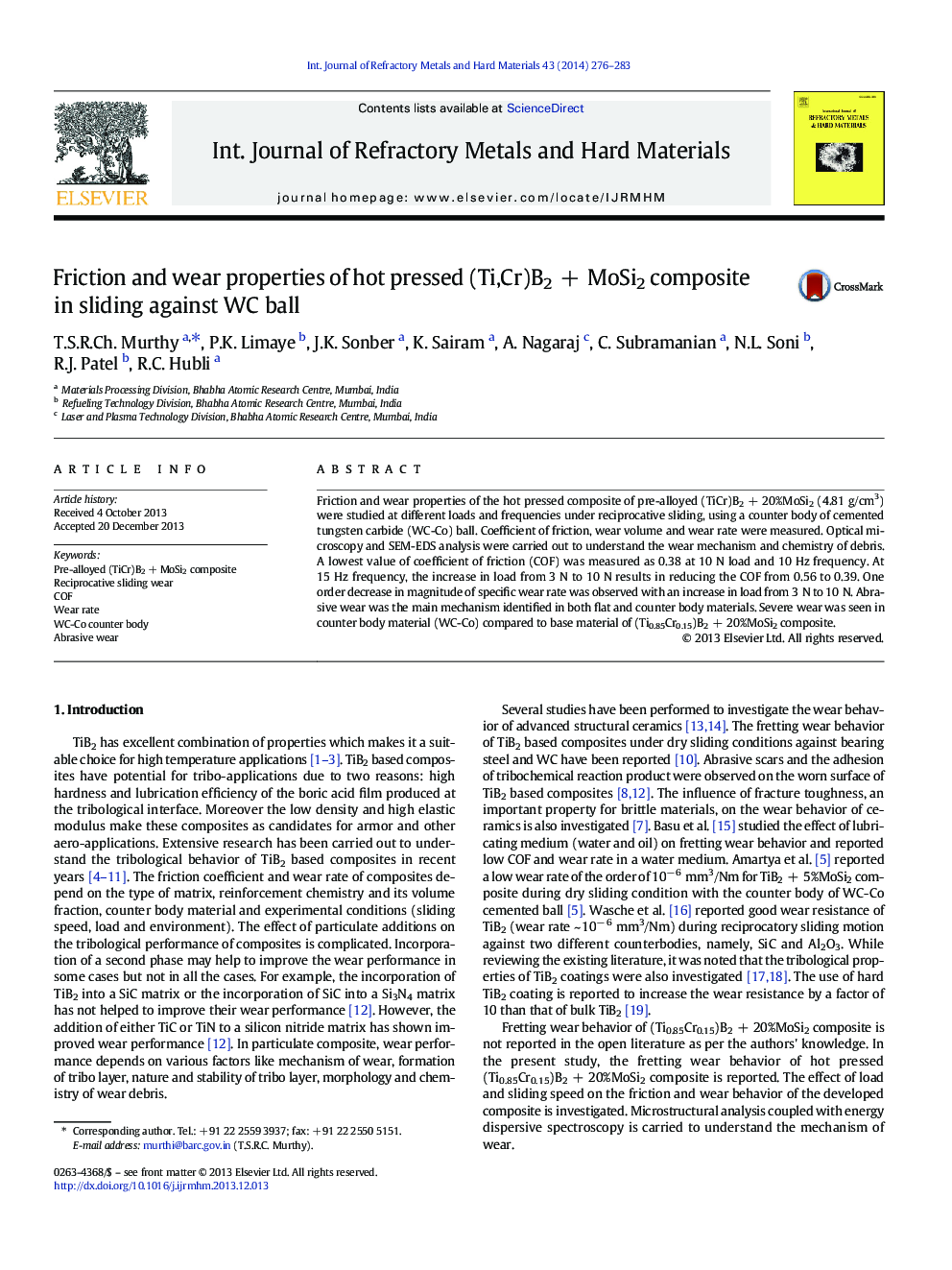| Article ID | Journal | Published Year | Pages | File Type |
|---|---|---|---|---|
| 1603264 | International Journal of Refractory Metals and Hard Materials | 2014 | 8 Pages |
•Coefficient of friction is a strong function of load and little effect on the sliding speed.•Specific wear rate is observed to decrease with the increase in load for the investigated composites.•Under the investigated sliding conditions, third body formation was observed.•Abrasive wear mechanism was mainly observed in both flat and counter body materials.•Severe wear was observed in WC compared with (Ti0.85Cr0.15)B2 + 20%MoSi2 composite.
Friction and wear properties of the hot pressed composite of pre-alloyed (TiCr)B2 + 20%MoSi2 (4.81 g/cm3) were studied at different loads and frequencies under reciprocative sliding, using a counter body of cemented tungsten carbide (WC-Co) ball. Coefficient of friction, wear volume and wear rate were measured. Optical microscopy and SEM-EDS analysis were carried out to understand the wear mechanism and chemistry of debris. A lowest value of coefficient of friction (COF) was measured as 0.38 at 10 N load and 10 Hz frequency. At 15 Hz frequency, the increase in load from 3 N to 10 N results in reducing the COF from 0.56 to 0.39. One order decrease in magnitude of specific wear rate was observed with an increase in load from 3 N to 10 N. Abrasive wear was the main mechanism identified in both flat and counter body materials. Severe wear was seen in counter body material (WC-Co) compared to base material of (Ti0.85Cr0.15)B2 + 20%MoSi2 composite.
